Colossal pillars, historical figures, mighty wonders and hidden history is all to be found in Lepakshi. Attached to it are some fascinating facets and signal stories. The Architecture from the Vijayanagara era stands strong and high with the famous Pillar design including the ‘hanging pillar’. Despite the many questions that you may have with the clues that are left behind, the temple itself is a unique one which has etched onto me for sure. So what exactly is special?
The history of the village Lepakshi dates back to the Vijayanagara era of the 14th century. The empire ruled for over 3 centuries allowing colossal temples and other architecture to be erected. One of these is the famous Veerabhadra Temple which is popularly known as the Lepakshi Temple. The village is mostly a tourist destination with vast greenery and notably the architectural sites which include the Temple, Nandi and Jatayu(the bird).

Jatayu
In this area, there’s a monumental stone on which a statue of a heroic-looking bird is embedded. Connected to this bird is some history:
Legend has it that in a trivial battle between Jatayu and Ravana in the epic Ramayana, Jatayu fell from being wounded. It’s said that the bird landed here. On this appearance, Sri Rama says ‘Le pakshi’ meaning ‘rise bird’ in Telugu, hence the name Lepakshi…

At the entrance, tickets are offered to go up for a close view of the bird. The escalier guides you to the top for some fresh air and a picturesque view of the village. The site is brightened with lush greenery and this is a nice stop for some refreshments or a toilet break. Assuming that the weather is pleasant(most of the time), you can spend a good one hour here!
Nandi
In the Hindu religion, the Nandi is a vehicle for Lord Shiva and it’s the bearer for truth and righteousness. It’s commonly seen at the entrance in most Temples. Remarkably, this Nandi is located outside the Lepakshi Temple at a distance 200m away from it. This lead to some conclusions that the original temple site was much wider than its boundaries today.
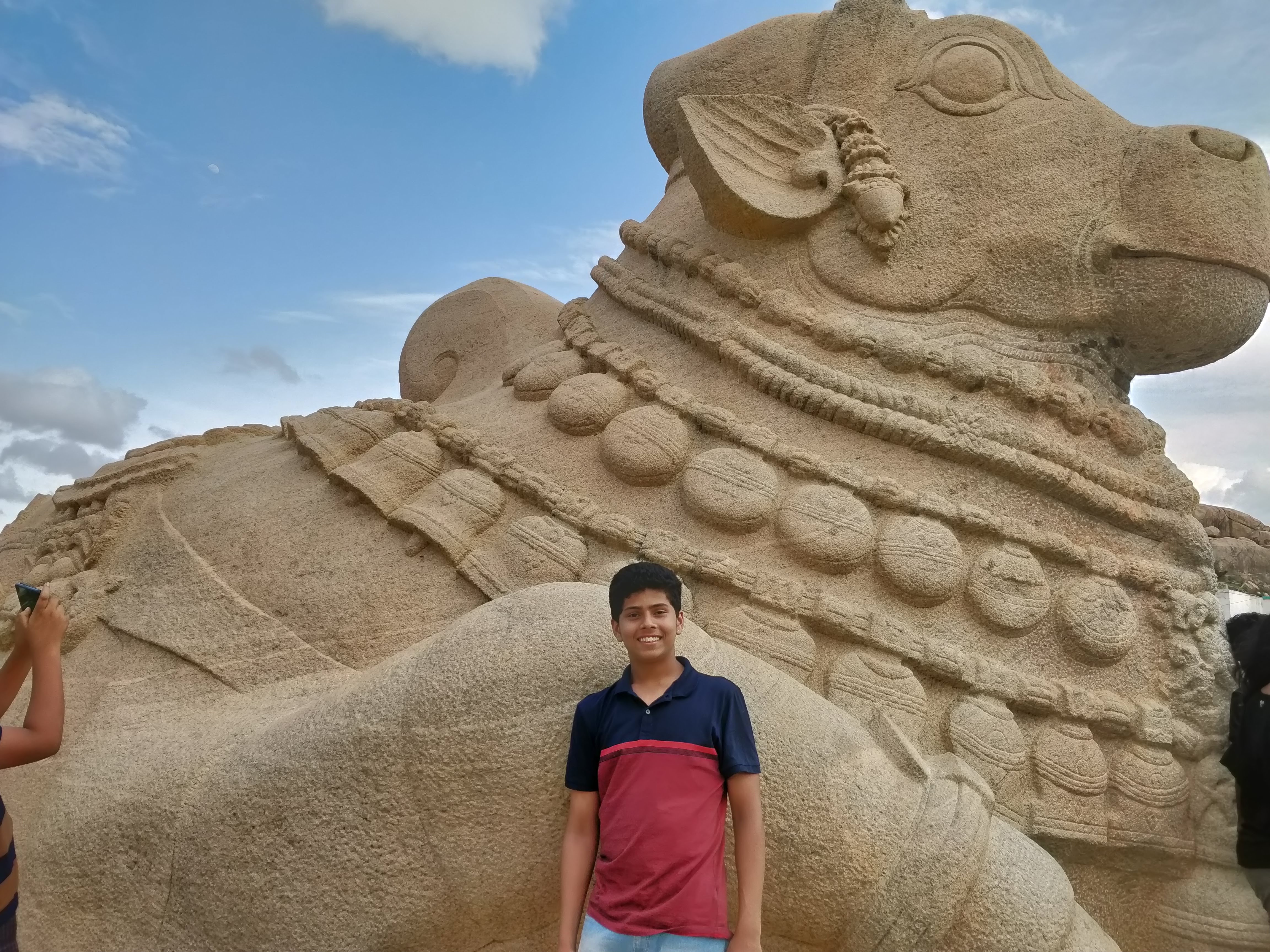
Being the largest monolithic structure at a height of 5m and a length of 8m, this structure boasts a powerful sign of the Temple’s mightiness. Each shape is exquisitely carved and the single granite stone maintains a minimalistic texture. Even at such a scale, the detail is vivid, showing how much work would have gone into this.
At the entrance, there’s a board giving some information about the history(quite rare in India). As it’s a sacred place, most people took off their footwear. Adding to the greenery, the garden that surrounds the Nandi is a pleasant place for some rest. We stayed there for a while before heading off to the most exciting part.
Veerabhadra(Lepakshi) Temple
The Temple was built in the early 16th century by brothers Virupanna Nayaka and Viranna who were the Governors of the Empire. It is mostly built of out of granite rock with the “pillars” design. Adding to the fascination is the detail of carvings that goes into every pillar. It made me question: “Making one of these can take years, how can you make 70 with the limited machinery of the 16th century?”
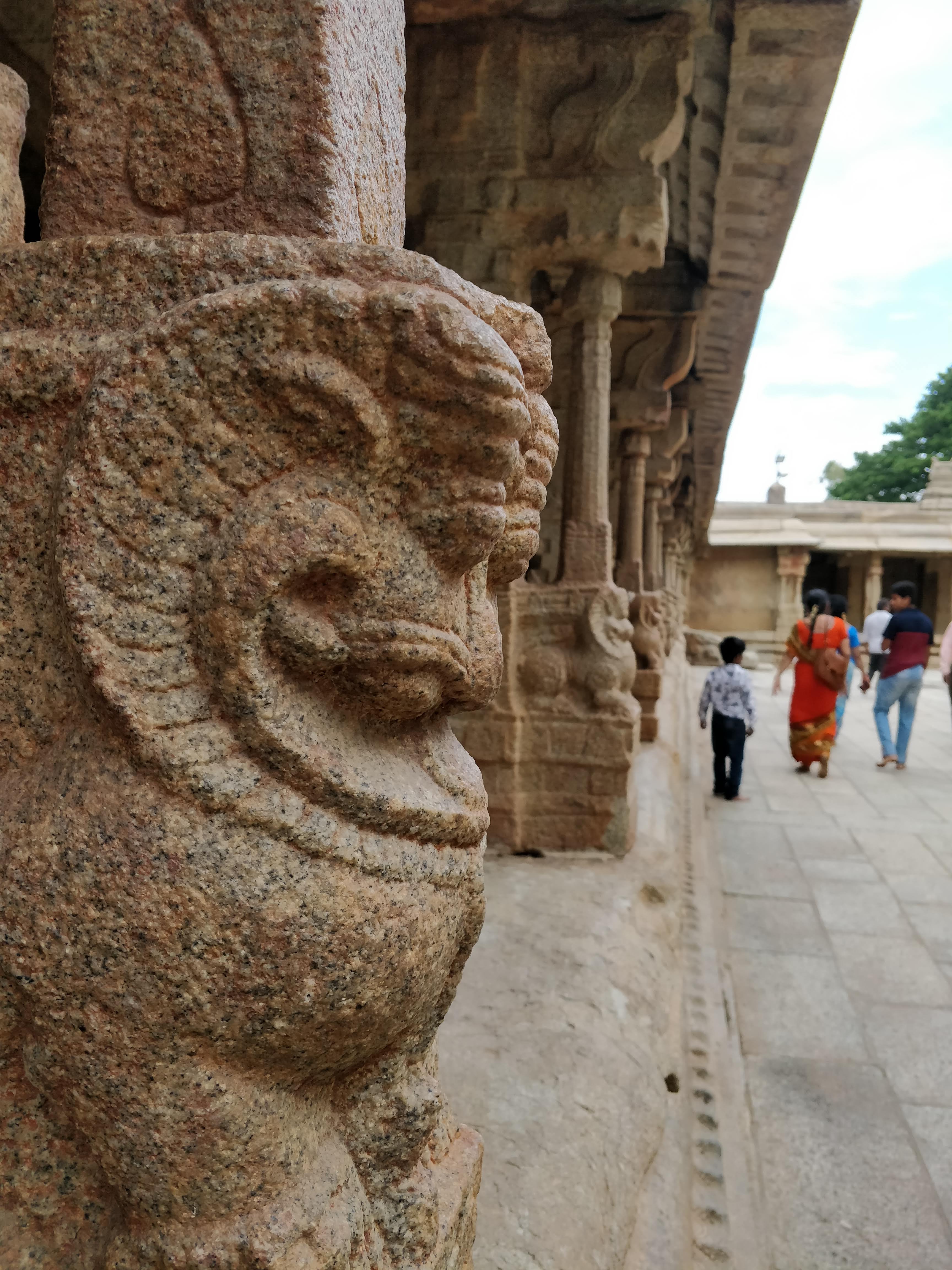

Yes, that’s right, there are 70 pillars in this Temple! Most of the carvings are of animals or characters from even older history(Mahabharata); this was perhaps a way to preserve history. Also, the Temple consists of paintings on the ceilings which are also evocative. If you look up you will find yourself staring at the paintings…
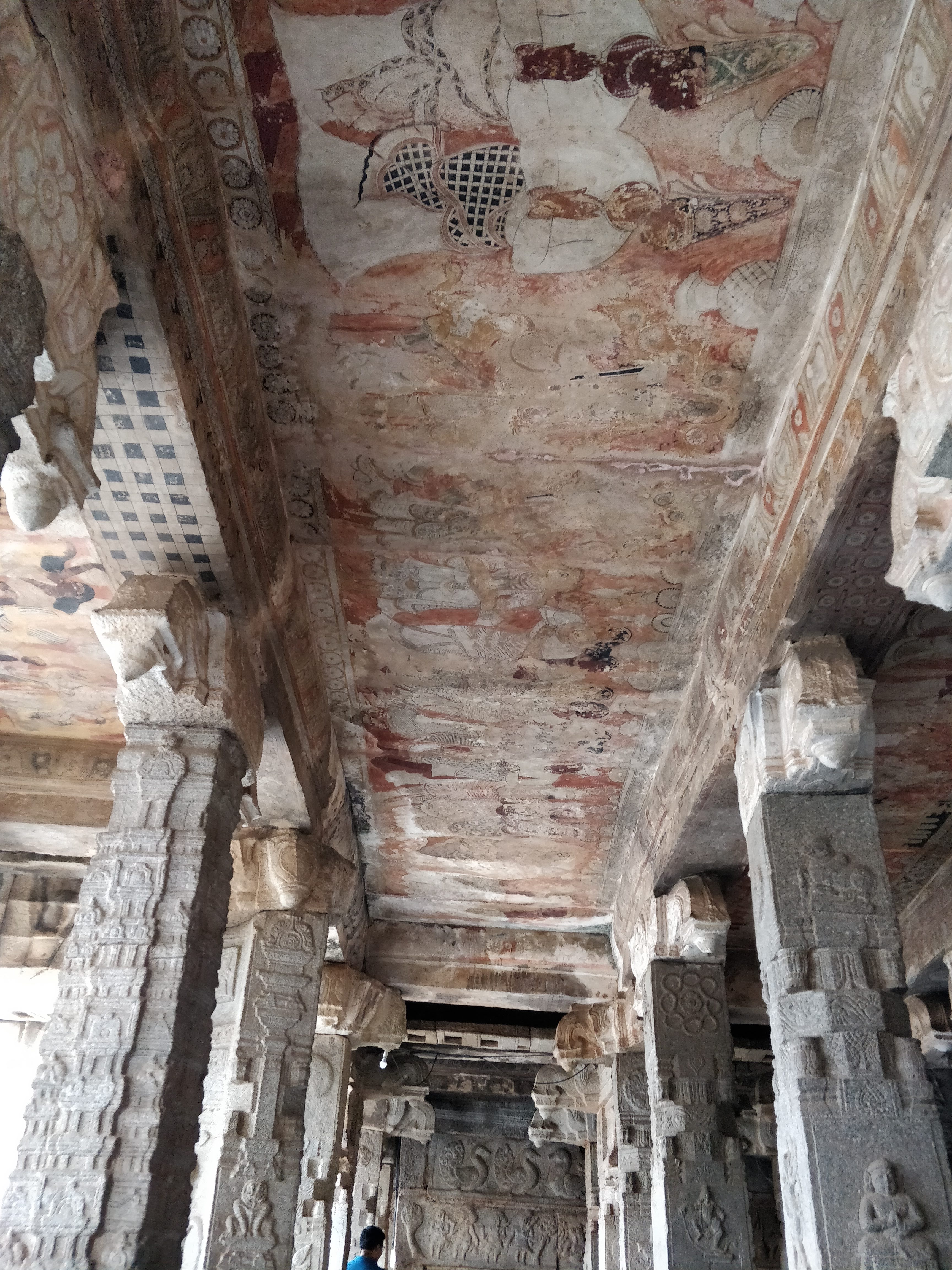
Upon entrance, the Temple’s courtyard is mostly open to the air with plenty of free space. Walking on the cold granite surface felt very comfortable. The boundaries of the temple are mostly covered by pillars with granite domes. Just how did they make and place these?

Straight ahead of the entrance is the main Temple itself. You are invited with a warm welcome from the priest who converses in many regional languages and gives valuable information about the Temple’s history. Beyond, is a mostly dark room with an abundance of paintings on every inch of space available. Due to the ash from the various fires in Poojas over the past 6 centuries, the room has darkened and the paintings are wearing away. During our visit, a group of filmography students gathered with gear to record for a documentary they were making. Sadly, I couldn’t get any more info…
Outside the temple, as you walk around, there’s an elevated section that looks incomplete. This was originally dedicated for a Kalyan Mandapam(Wedding Hall).The Temple was practically complete at this time however, before the Mandapam could be complete, Virupanna(one of the builders) was brutally punished.

Legend has it that during the King’s absence, the King’s treasure disappeared. When the King returned, he noticed the lost treasure and decided to punish Virupanna(who was his treasurer). It’s said that Virupanna was blinded and that his bloodstains are still present to this day by his eye marks on the wall.

Hanging Pillar
A particular section of the Temple contains many pillars stacked one after the other. Here, generally, there would be a large group of people surrounding one of the pillars. Unsurprisingly, it’s the ‘hanging pillar’. This pillar is said to be hanging as it doesn’t touch the floor. People literally surround the pillar to pass thin objects through to witness the ‘magic’ themselves.

It’s said that during the British Era, an engineer set foot in a futile attempt to move the pillar to uncover the ‘magic’.
Personally, despite the surprise that the ‘hanging pillar’ gave, I was still engrossed by the genius work of architecture in balancing that ‘maze of pillars’!
Sita’s Footprint
Also, as you exit the pillars, another wonder attracts heaps of people; there’s the colossal footprint of Sita on the floor. It’s so big that your entire feet might just fit the big toe.
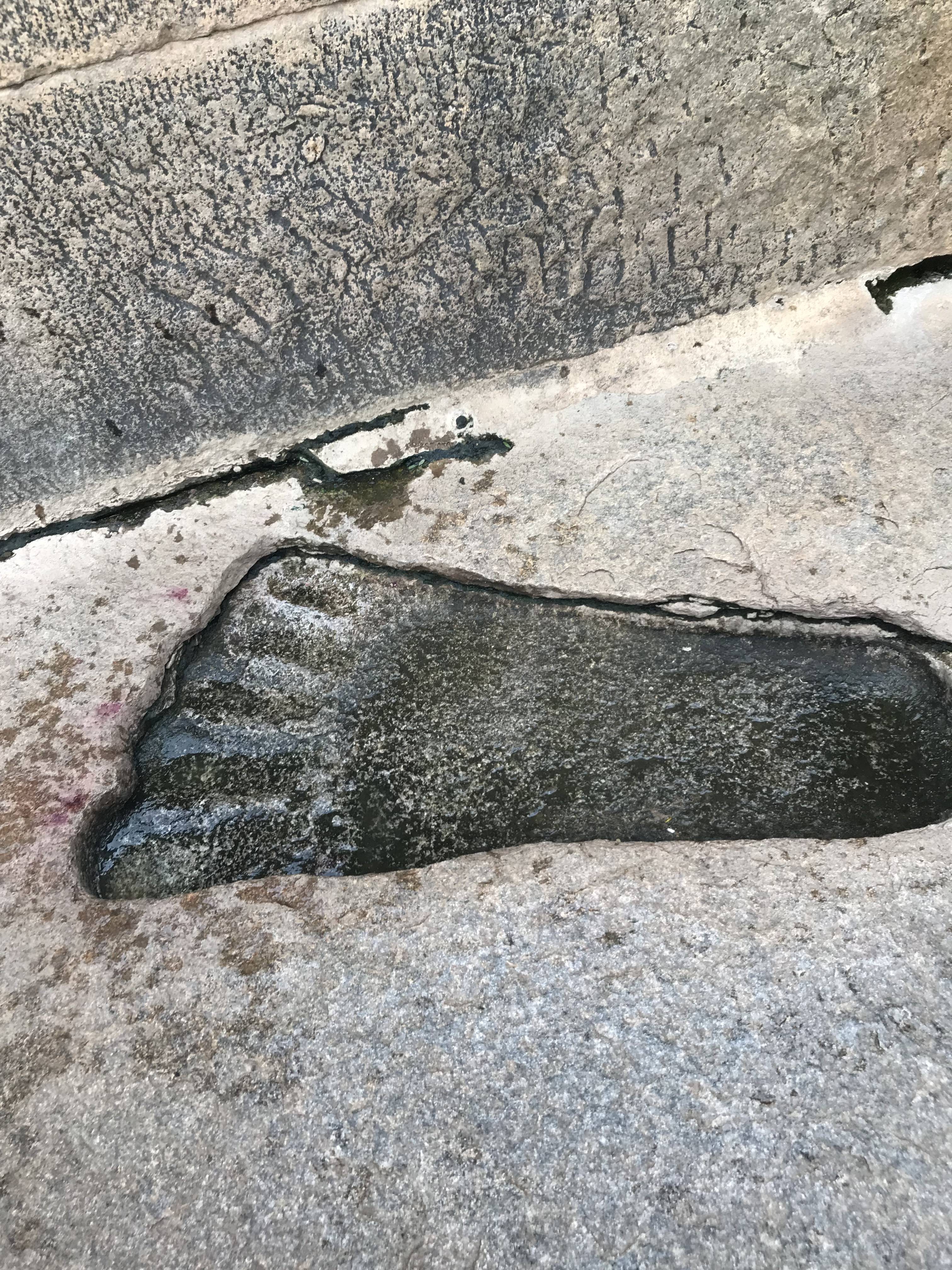
It’s said that during Ravana’s voyage with Sita to Sri Lanka, they stopped here for some rest and the footprint is a sign.
Interestingly, the footprint is always wet with water seeping in from various sources.
Unique Shiva Lingam
The Temple adds to its amazement with another exquisite erection – the Shiva lingam.
According to the Hindu Mythology Shiva’s picture or statue is never shown in Temples because an element of him connotes destruction. Hence, he’s portrayed in the form of a lingam which is a small oval-shaped stone.
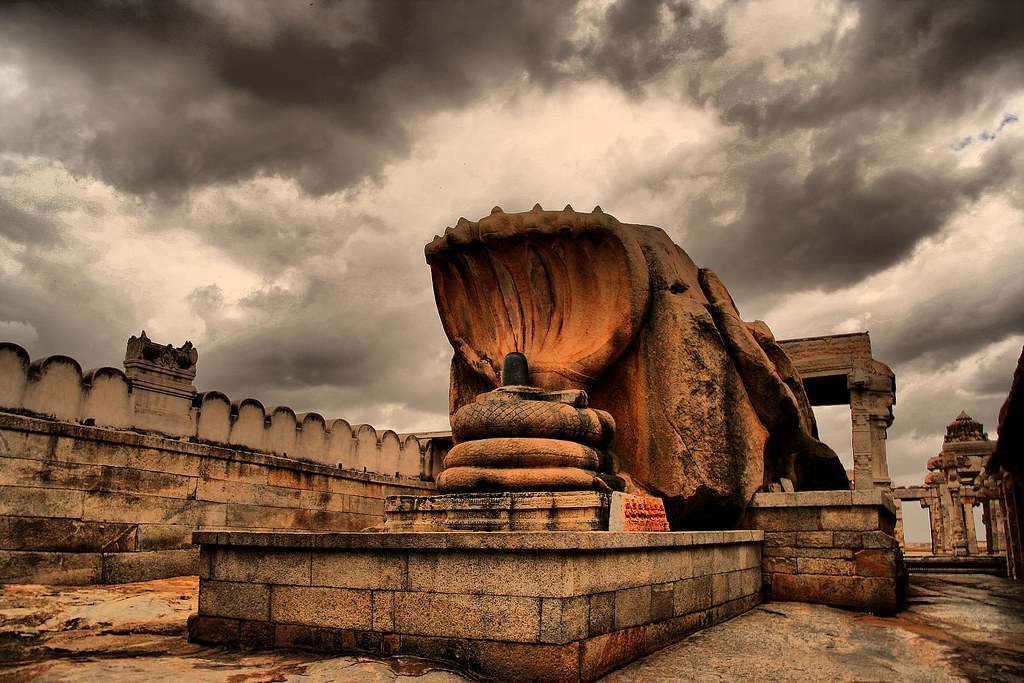
On a giant slab of granite is a small Shiva Lingam which is resting on the tail of a seven-headed snake. This Shiva Lingam is the only one of its kind and again hints at some hidden history. This particular statue is more obscure however the overall structure presents the idea.
With such genius work of art and architecture, the village can be visited over and over again. History clearly plays a part but with unconfirmed conclusions. The wonders of these locations and the stories attached to it are fascinating however the answers are still unclear. What we can appreciate is the presence of such wonders and fascinating portrayals. The village certainly contains an element of speciality; it’s a must-visit!


Leave a Reply